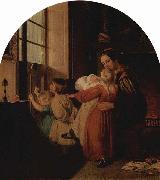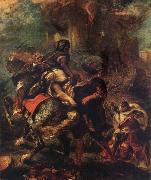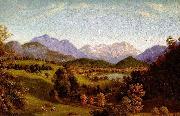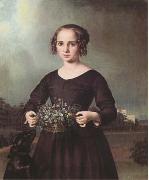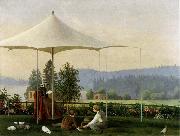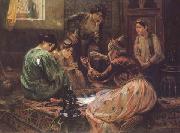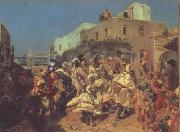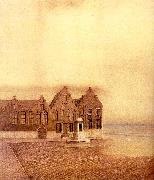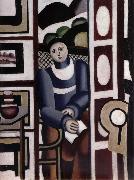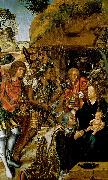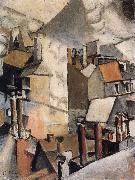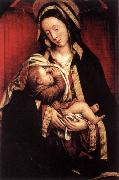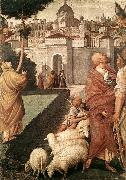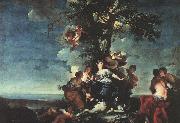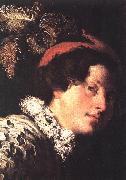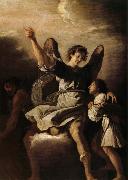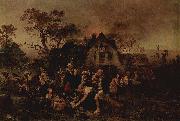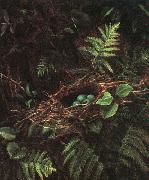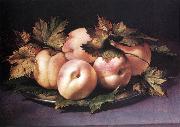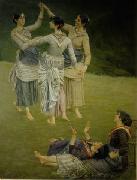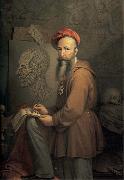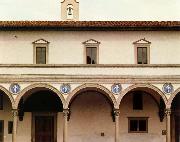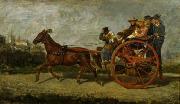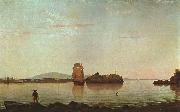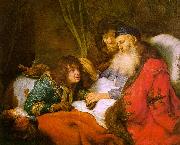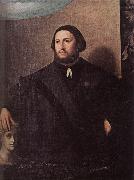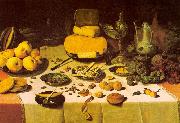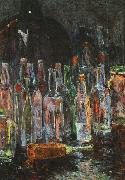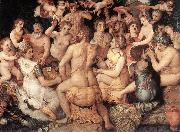|
|
|
|
|
|
|
|
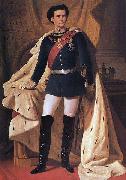 |
Ferdinand von Piloty
|
|
painted King Ludwig II of Bavaria in generals' uniform and coronation robe in 1865 |
|
|
|
|
|
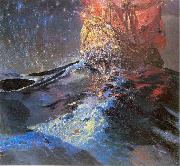 |
Ferdynand Ruszczyc
|
|
(1870-1936) was a Polish painter, printmaker, and stage designer. Ruszczyc originally studied law at the University of St. Petersburg, but then switched majors and began taking painting classes at the Academy of Fine Art. He was a student of famous Russian landscape painters Ivan Shishkin and Arkhip Kuindzhi. Ruszczyc travelled to the Crimea to paint seascapes, and later to the Baltic islands and Sweden to paint northern landscapes. He visited Berlin, where he was significantly influenced by the Symbolist painters such as Arnold Bocklin. After graduation, Ruszczyc made extensive tours of Western Europe incorporating much of the styles he came across into his own art. |
|
|
|
|
|
|
|
|
|
|
|
|
|
|
|
|
|
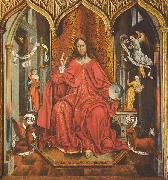 |
Fernando Gallego
|
|
(c. 1440 - 1507) was a Spanish painter, brought up in an age of gothic style, his art is generally regarded as Hispano-Flemish style. It's thought that he was born in Salamanca, Spain, and his first known works were in the cathedrals of Plasencia and Coria, in Ceres (Spain). |
|
|
|
|
|
|
|
|
|
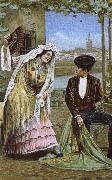 |
ferruccio busoni
|
|
Period: Modern (1910-1949)
Country: Italy
Born: April 01, 1866 in Empoli, Italy
Died: July 27, 1924 in Berlin, Germany
Genres: Chamber Music, Concerto, Keyboard Music, Opera, Orchestral Music, Vocal Music |
|
|
|
|
|
|
|
|
|
|
|
|
|
|
|
|
|
|
|
|
|
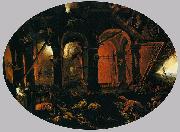 |
Filippo Napoletano
|
|
(c. 1587 - November 1629) was an Italian artist, with a peculiar output, mainly landscape and genre scenes and also drawings or etchings of diverse, often particular, items such as exotic soldiers, skeletons of animals, or cityscapes.
He began his career in his native city, Naples (1600-1613) and moved to Rome in 1614-1617), where he appears to have encountered and felt influenced by the successful Flemish landscape painters such as Paul Bril, Goffredo Wals, and Adam Elsheimer.
In 1617 Cosimo II dee Medici summoned him to Florence, where he worked closely with Jacques Callot. From notebooks, Filippo is known to have made hundreds of sketches of Tuscan landscapes and towns.
Starting in 1620 he reproduced in etchings part of his collection of animal skeletons owned by Johann Faber, a Bavarian physician-naturalist residing in Rome and a member of the scientific Accademia dei Lincei. In 1622, Napoletano published twelve etchings of caprices (capprici) and military uniforms (which he signed as signed Teodor Filippo de Liagno).
He is described by Giovanni Baglione as possessing a collection, a Wunderkammer of bellissime bizzarrie ("beautiful bizarre objects"), including among the objects exotic weaponry; fossilized plants; tiger, lion, and turtle skulls; oriental porcelain and sculpted crockery; a vest made of human skin; a harness for dragging whales on ice; a three-legged flea, Persian uniforms, and antiquities such as Roman coins, bronze lamps, and a few statuettes. After Napoletano death at Rome in 1628, bidding for such material was made by collectors such as Cardinal Ippolito Aldobrandini (future Clement VIII) and Cassiano dal Pozzo.
|
|
|
|
|
|
FIORENZO DI LORENZO
|
|
Italian painter, Umbrian school (b. ca. 1445, Perugia, d. ca. 1525, Perugia) |
|
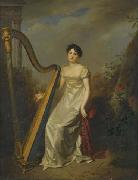 |
Firmin Massot
|
|
painted Portrait of a lady, wearing a white dress and seated beside a harp a landscape beyond in 1810 |
|
|
|
|
|
Fiske Warren
|
|
Frederick Fiske Warren (2 July 1862-2 February 1938) was a hugely successful Paper Manufacturer, fine arts denizen and major supporter of Henry George's Single Tax system which he helped develop in Harvard, Massachusetts, United States in the 1930's. He was the son of Samuel Dennis Warren and Susan Cornelia Warren of Beacon Hill, Boston, Massachusetts and the brother to Samuel D. Warren (US attorney) and Edward Perry Warren.
Born in Waltham, Massachusetts, Fiske was raised in a mansion on 67 Mount Vernon Street[1] in Beacon Hill, Boston, Massachusetts. A philanthropic and highly educated family, the Warren brothers and sisters all enjoyed tranquil childhoods growing up between the family homes in Boston and Waltham, Massachusetts, also known as "Cedar Hill".
|
|
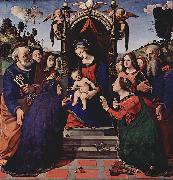 |
Fitz Henry Lane
|
|
(December 19, 1804 - August 14, 1865) was an American painter and printmaker of a style that would later be called Luminism, for its use of pervasive light.
Fitz Henry Lane was born on December 19, 1804, in Gloucester, Massachusetts. Lane was christened Nathaniel Rogers Lane on March 17, 1805, and would remain known as such until he was 27. It was not until March 13, 1832 that the state of Massachusetts would officially grant Lanees own formal request (made in a letter dated December 26, 1831) to change his name from Nathaniel Rogers to Fitz Henry Lane. As with practically all aspects of Lanees life, the subject of his name is one surrounded by much confusioneit was not until 2005 that historians discovered that they had been wrongly referring to the artist as Fitz Hugh, as opposed to his chosen Fitz Henry, and the reasons behind Lanees decision to change his name, and for choosing the name he did, are still very unclear.
|
|
|
|
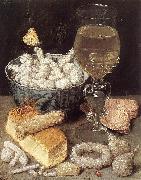 |
FLEGEL, Georg
|
|
German painter (b. 1566, Olomouc, d. 1638, Frankfurt am Main).
|
|
|
|
|
|
|
|
|
|
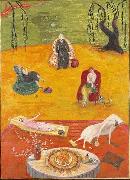 |
Florine Stettheimer
|
|
(August 29, 1871 - May 11, 1944) was an American artist. She has been described as "a Deco-influenced early Modernist whos never really gotten her due".
Florine was born in Rochester, New York to Joseph Stettheimer and Rosetta Walter. Her father, a banker, left the family before the children were grown. She was the fourth of five children: Walter, Stella, Carrie, Florine, and Ettie. After Walter and Stella married, the youngest three immured with their mother to form an epicurean way of life.She spent much of her early life traveling, studying art in Italy, Spain, France, Germany, and Switzerland. She studied for three years in the mid-1890s at the Art Students League of New York, but came into her own artistically upon her permanent return to New York after the start of World War I. In October 1916, the only one-person exhibition of her work during her lifetime took place at New York's Knoedler & Company. She exhibited 12 "high-keyed, decorative paintings", none of which were sold.
Cushioned by family resources, Stettheimer refrained from self-promotion and considered her painting "an entirely private pursuit". She intended to have her works destroyed after her death, a wish defied by her sister Ettie, her executor.
Stettheimer's privileged position pervades her work. As one critic has written, "money she regarded as a birthright, decidedly not something to be flaunted in the shape of a dozen yachts, but rather to be used as a palliative against the more unpleasant aspects of the world outside... In this frame of mind, she felt free to depict life as a series of boating parties, picnics, summertime naps, parades and strolls down Fifth Avenue."
She created the sets and costumes for the 1934 production of Four Saints in Three Acts, an opera by Virgil Thomson with a libretto by Gertrude Stein. Her designs, which used cellophane in innovative ways, proved to be the project for which she was best known during her lifetime.
She assisted her sister Carrie in the creation of the Stettheimer Dollhouse, now in the collection of the Museum of the City of New York. The house is a whimsical depiction of an upper-class residence, filled with works by Stettheimer's artist friends, including William Zorach, Alexander Archipenko, and Gaston Lachaise. |
|
|
|
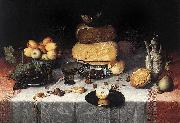 |
Floris van Dyck
|
|
, also called Floris van Dijck or Floris Claesz. van Dyck (Delft or Haarlem, c. 1575 - Haarlem, before 26 April 1651), was a Dutch Golden Age still life painter.
He lived in Haarlem for most of his life, but he was born in Delft. He was a cousin of Pieter Cornelisz van Dijck. In 1600 he is documented as being in Rome, indicating he made a journey to Italy. In 1606 he returned to the Netherlands, where he joined the Haarlem Guild of St. Luke in 1610 and became dean in 1637. He was influenced by Osias Beert and Clara Peeters. He is considered the inventor of the banketje (banquet still life genre similar to breakfasts, or ontbijtjes), together with Nicolaes Gillis. |
|
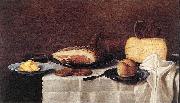 |
Floris van Schooten
|
|
(1590-1655), was a Dutch Golden Age still life painter.
According to the RKD, Van Schooten was the son of a leading Catholic family of Amsterdam who came to live in Haarlem in 1612. During that period, many Catholic families left Amsterdam where the Protestants had the upper hand in local government, for Haarlem, where the climate for Catholicism was more tolerant. The young Van Schooten became a member of the Haarlem Guild of St. Luke and married the daughter of a leading beer brewer there, Rycklant Bol van Zanen. Together they had 3 daughters and a son Johannes, who also became a painter |
|
|
|
|
|
|







